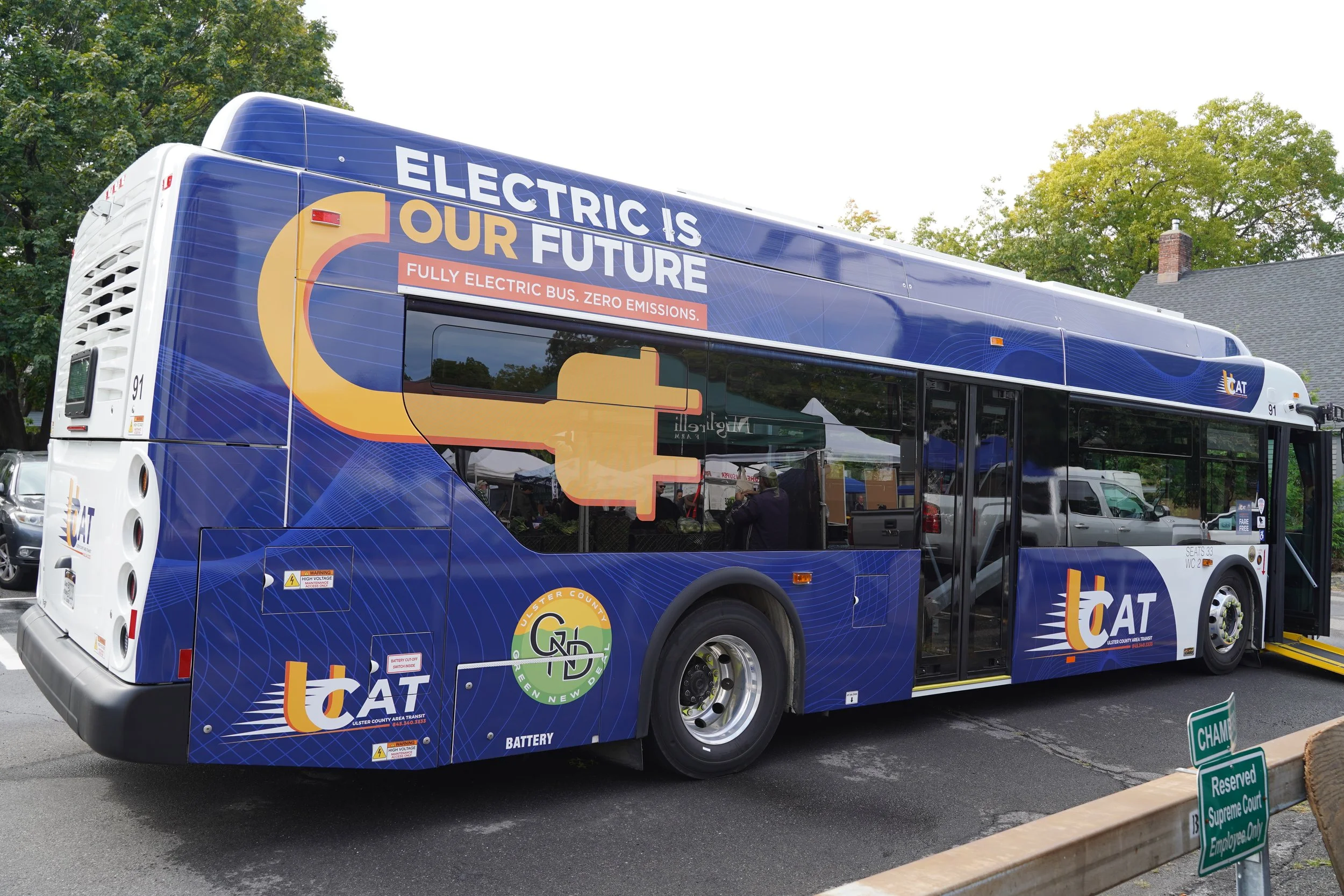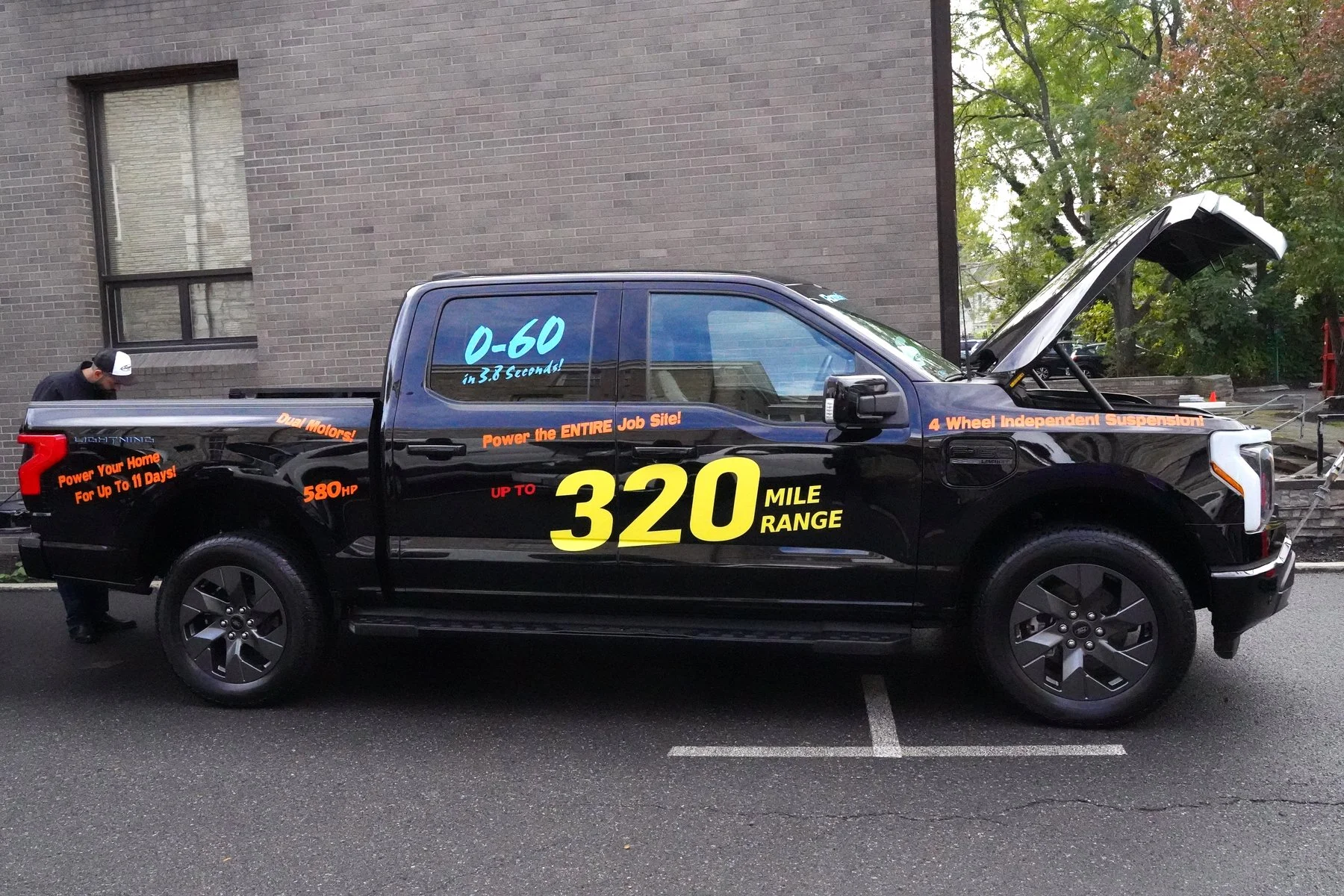
Transportation
Transportation Solutions
-
Over 60 makes and models for every taste; buy or lease. Average operating cost equivalent to a dollar per gallon of gas. Supply chain for battery materials has impacted some production but major automakers like GM are still committed to phasing out internal combustion cars by the mid-2030s.
-
Battery electric buses have been showing up in major transit systems including NYC, NJ and in Ulster County. Local governments and utilities are negotiating charging costs which can be high.
-
The Ford F150 illustrates a smooth rugged electric truck that is impressing truck owners.
-
Widely available, prices and durability vary widely, local safety in traffic can be an issue.
-
Around 1% of school buses in the US are electric, but suppliers like Thomas, Lion and Bluebird aim to change that. Diesel school buses can also be converted to electric at about half the cost of a new electric school bus.
-
Train electrification technology is advancing rapidly. Combined with high-efficiency solar panels, renewable electric trains are a realistic possibility by 2030.
-
Proof of concept vessels Solaris and Apollonia, supported by the Hudson River Maritime Museum, show the potential of these technologies.
-
Trading in our conventional cars doesn’t get them off the road. Converting to EV has been a niche industry, but heavy tech and investment have started moving in this space.
-
The Hudson Valley is blessed with trail networks and communities committed to “complete streets” that support walking and biking. These resources need to be celebrated, expanded and better used.
-
Live near work and transit…. Or work where you live.
Regional Strategy
The challenge is two-fold: transitioning the transportation to electric as quickly as possible, and – while so much has to change – cracking the code of making transit and mobility choices widely available. The needed work around the region is “acceleration through coordination” – making it easier to own electric vehicles by filling gaps in charging, preparing dealerships and supporting vehicle owners from ordinary drivers to school bus fleet managers. But while the transportation system is in flux and there are significant new funding streams available, it makes sense to make every effort to solve the long-standing problems of access to transit and mobility for people without cars, and to improve the range of choices for getting around.
The network of Climate Smart and Clean Energy Community volunteer groups in Hudson Valley communities should design an ongoing, regional campaign to get over the EV adoption hurdles associated with charging and consumer skepticism, achieving “acceleration through coordination” by:
Advocating for installation of public-facing chargers wherever there are gaps, and connecting potential site owners with the resources of NYSERDA and NYPA;
Developing an ongoing program of training and support for car dealerships;
Developing an ongoing program of consumer education through ride-and-drive opportunities associated with existing, well-attended events such as Chamber mixers.
Transportation stakeholders including expert groups, MPOs, motivated local governments and service providers should work together to crack the code of making transportation options widely accessible and convenient:
Creating the best possible revenue model for micro-transit systems and a management structure (such as franchising) that can be consistently funded, potentially with cost-share from benefitting parties such as workplaces. This project could position a group of stakeholders for future rounds of NYSERDA’s Clean Transportation Prize or other federal/ state funding to incubate a micro-transit system.
Supporting the growth of commercial ventures in the micro-transit sector such as e-bike and bike repair shops (through marketing help, training, grants etc), in coordination with local complete streets and transportation safety initiatives.
With the Center for Post-Carbon Logistics, creating a 5- and 10-year plan for renewably-powered passenger ferries and cargo transportation on the Hudson, starting with proof-of-concept vehicles and building on these, and including developing environmental guidelines for sustainable maritime transportation in close consultation with the environmental and scientific communities.
Laying groundwork for the growth of an ICE-to-EV conversion industry starting with niche demonstration vehicles like small business delivery fleets.
Supporting, and filling in gaps, for the already well established system of trails, bike paths, shoreline connections, and other infrastructure to support pedestrian, bicycle and microtransit use as.
identifying responsible parties and funding streams for implementing priority projects.
This coalition will convene and facilitate this coordination process and seek to raise funding to make it ongoing..
Who Cares? A Partial List of Stakeholders:
Center for Post-Carbon Logistics
https://postcarbonlogistics.org/
Dollaride, Inc. (Brooklyn & Queens electrifying shuttles - model for HV)
https://www.cleanneighborhoodschallenge.org/awardees/dollaride-inc
Evolv-Electric Transportation (school bus resource)
https://www.evolv-electric.org
Mid-Hudson Valley Transportation Management Area
https://mid-hudson-valley-transportation-management-area-ocnygis.hub.arcgis.com/
NY Metropolitan Transportation Council
NYSERDA Clean Transportation Program
https://www.nyserda.ny.gov/All-Programs/clean-transportation-program
Project MOVER, Village of Ossining
https://www.electricmobilitychallenge.org/awardees/eit-innoenergy
Sustainable Westchester – Bee-Line On Demand Program
https://www.electricmobilitychallenge.org/awardees/sustainable-westchester-inc
Tri-State Transportation Campaign
New York League of Women Voters









